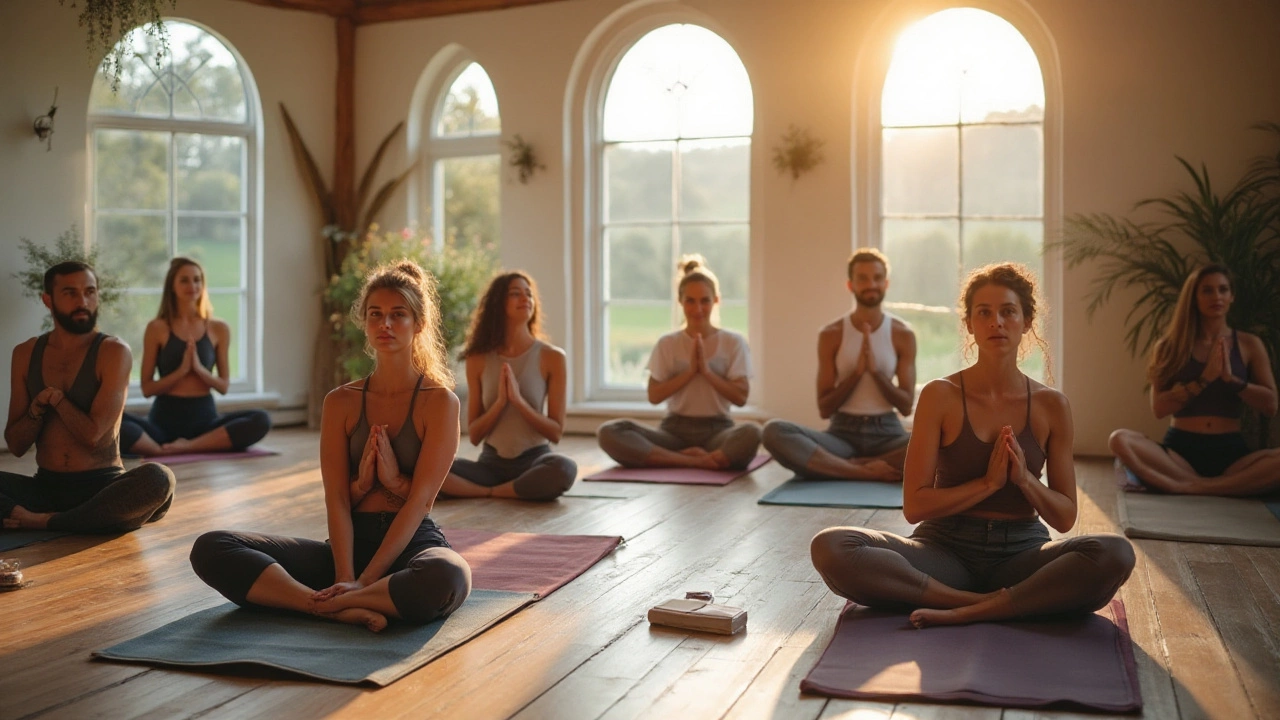Optimal Yoga Practice: How to Get the Most Out of Every Session
If you’ve ever wondered whether 20 minutes of yoga a day is enough, you’re not alone. The truth is, the right routine and a few smart habits can turn even a short practice into a powerful tool for strength, flexibility, and calm. Below you’ll find the basics you need to set up a routine that works for any schedule, plus some pro tricks to keep you improving.
Start With a Clear Goal
First thing: decide what you want from yoga. Are you after better posture, more core strength, stress relief, or a mix of all three? Write that goal down and keep it in sight. When you know the purpose, picking poses and the right length becomes a lot easier. For example, if flexibility is the priority, spend extra minutes in forward folds and hip openers. If strength is the focus, incorporate plank‑based flows and balance poses.
Build a Consistent Schedule
Consistency beats intensity for most people. Aim for at least three sessions a week, even if each one is only 20‑30 minutes. A short daily practice can be enough, but it should include a warm‑up, a main flow, and a brief cool‑down. Here’s a quick template you can copy:
Warm‑up (5 mins): gentle cat‑cow, shoulder rolls, and a few breaths in child's pose.
Main flow (15‑20 mins): Sun Salutation A twice, followed by a series of standing poses (warrior II, triangle, side‑angle). Add a core block (boat pose or plank variations) if strength is a goal.
Cool‑down (5 mins): seated forward fold, supine twist, and a final savasana with deep breathing.
Stick to the same time of day if you can – morning practice wakes up the body, evening practice helps wind down. Whatever fits your life, make it a habit.
Progress gradually. Don’t jump into an advanced pose just because you saw it online. Start with the basics, master the alignment, then add a tougher variation. This approach prevents injury and builds confidence.
Use props wisely. A yoga block, strap, or folded blanket can make a big difference, especially when you’re short on flexibility. Props let you stay in the pose longer without straining, which is a core part of an optimal practice.
Focus on breath. The breath is the thread that ties everything together. Try a 4‑2‑4 pattern (inhale for 4 counts, hold for 2, exhale for 4) during standing poses. When you sync movement with breath, you’ll notice smoother transitions and a calmer mind.
Track your progress. Keep a simple log – date, duration, and a quick note on how you felt. After a few weeks you’ll see patterns, like which poses lift your mood or which days you need extra rest. Use that info to tweak the routine.
Finally, remember that yoga isn’t a race. Some days you’ll feel tight, other days you’ll flow effortlessly. Both are normal. The key to an optimal yoga practice is listening to your body, staying consistent, and enjoying the process.
Ready to give it a try? Pick a quiet corner, roll out your mat, and follow the template above. Within a few weeks you’ll notice better posture, calmer thoughts, and a stronger core. That’s the payoff of an optimal yoga practice – real results without needing hours in a studio.

Unlocking the Magic Number for Optimal Yoga Practice
Maeve Larkspur Jan 16 0For yoga enthusiasts, discovering the magic number in yoga can transform practice into a powerful daily ritual. This concept is linked to the frequency and duration needed to maintain a balanced mind-body connection. By understanding this number, practitioners can cultivate harmony, leveraging ancient wisdom for physical and mental well-being. Each practitioner may find that their magic number is unique, as the practice adapts to individual needs and goals.
More Detail